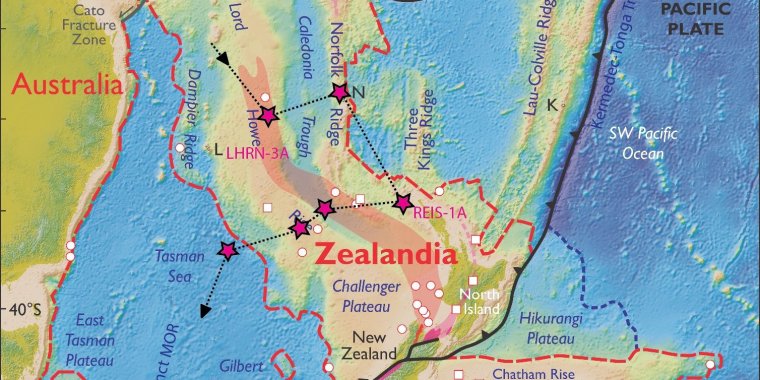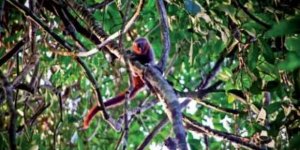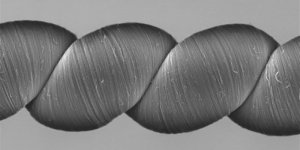| News / Science News |
Scientists return from expedition to lost continent of Zealandia
After a nine-week voyage to study the lost, submerged continent of Zealandia in the South Pacific, a team of 32 scientists from 12 countries has arrived in Hobart, Tasmania, aboard the research vessel JOIDES Resolution.

Expedition to lost continent of Zealandia. ![]()
Researchers affiliated with the International Ocean Discovery Program (IODP) mounted the expedition to explore Zealandia. IODP is a collaboration of scientists from 23 countries; the organization coordinates voyages to study the history of the Earth recorded in sediments and rocks beneath the seafloor.
Earlier this year, Zealandia was confirmed as Earth's seventh continent, but little is known about it because it's submerged more than a kilometer (two-thirds of a mile) under the sea. Until now, the region has been sparsely surveyed and sampled.
Expedition scientists drilled deep into the seabed at six sites in water depths of more than 1,250 meters (4,101 feet). They collected 2,500 meters (8,202 feet) of sediment cores from layers that record how the geography, volcanism and climate of Zealandia have changed over the last 70 million years.
According to expedition co-chief scientist Gerald Dickens of Rice University in the U.S., significant new fossil discoveries were made. They prove that Zealandia was not always as deep beneath the waves as it is today.
More than 8,000 specimens were studied, and several hundred fossil species were identified.
The discovery of microscopic shells of organisms that lived in warm shallow seas, and of spores and pollen from land plants, reveal that the geography and climate of Zealandia were dramatically different in the past.
The new discoveries show that the formation 40 to 50 million years ago of the "Pacific Ring of Fire," an active seafloor zone along the perimeter of the Pacific Ocean, caused dramatic changes in ocean depth and volcanic activity and buckled the seabed of Zealandia.
Big geographic changes across northern Zealandia, which is about the same size as India, have implications for understanding questions such as how plants and animals dispersed and evolved in the South Pacific.
The discovery of past land and shallow seas now provides an explanation. There were pathways for animals and plants to move along.
Studies of the sediment cores obtained during the expedition will focus on understanding how Earth's tectonic plates move and how the global climate system works. Records of Zealandia's history, expedition scientists said, will provide a sensitive test for computer models used to predict future changes in climate. (National Science Foundation)
YOU MAY ALSO LIKE





